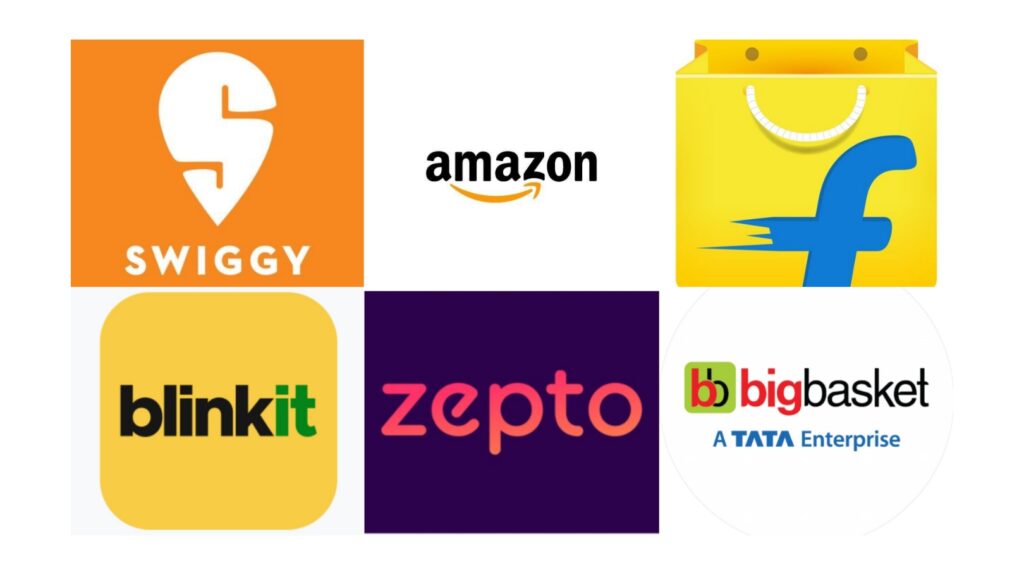India is the third-largest grocery market in the world and roughly 95% of it is still unorganised, dominated by local Kirana stores. The penetration of online grocery in the country is shallow as compared to most of the other major markets. This presents an enormous opportunity for e-grocers to tap the untapped market.
With an aim to deliver groceries and other essentials within 15-20 minutes, players such as Zepto, Blinkit, and Swiggy Instamart have revolutionized the consumption behaviour of Indian consumers. They have built a robust supply chain with unique value propositions while creating a strong convenience habit available to customers.
Based on a report by Redseer, India’s Quick Commerce Industry is expected to grow by 10-15 times to become a $5 billion industry by 2025. This growth can be attributed to rapid urbanisation and internet penetration, busy lifestyles and a preference for convenience over value. Additionally, the pandemic-induced work-from-home has prompted the customers to opt for delivery at their doorsteps. The impulse purchases by the tech-savvy Gen-Z and millennial population have further incentivized e-grocers to ramp up their facilities to develop express delivery business models.
Last year, grocery delivery company Grofers rebranded itself as Blinkit while Swiggy had set up its own quick delivery platform ‘Instamart’. Stalwarts such as Big-Basket, Amazon, and Flipkart have also joined the bandwagon.

The Quick Commerce Model
The quick commerce firms typically follow an ‘Inventory Based Model’ which involves a mother hub, distribution centres, and dark stores. The dark stores or ‘Micro Fulfilment Centers’ have an average area of 2,500 square feet and hold a narrow assortment of approximately 2,000 SKUs which cover more than 95% of a customer basket. These dark stores are strategically located and serve customers within a radius of 2-4 km.
Once an order is placed, it is allocated to the nearest dark store where the products are assorted and packed for delivery. Companies like Zepto usually do this step within 60 seconds of the receipt of the order, which gives an idea of how efficient the process needs to be in order to deliver within the promised time.
Then the delivery fleet hits the road and usually, the average distance to be covered is 2-3 kilometres. While there have been concerns regarding the rash driving of the riders and rider safety, these are not so valid because even if the rider rides at a speed of 20 km/ hr, the order can be delivered within the stipulated time. Additionally, the quick delivery firms have repeatedly made it clear that riders are not penalized for exceeding the delivery time.

Key Issues
While the Q-comm firms have provided customers with a convenience that could hardly be imagined a while back, they are facing some grave issues which question the sustainability of their business model. Some of them are:
1) Poor Unit Economics: Q-Comms are incurring huge losses in delivering orders at a lightning speed. The basic levers of unit economics are-
Average Order Value (AOV) = Gross Order Value/ Number of Orders. The AOV in E-Grocery Industry is approximately Rs. 500.
Levers of cost are: Cost of Goods Sold, Picking and Packing Costs, Last Mile Delivery Cost, Dark Store Rent, and Marketing Spend.
Zomato’s recent acquisition of Blinkit brought to light that Blinkit is losing roughly Rs. 132 on delivering an order with an AOV of ~Rs. 500 which is a loss of 26.4% of AOV! This is a clear indication that the current unit economics are not sustainable to support the business in the long run
2) High delivery fleet attrition rate:
Rising fuel prices and return to pre-pandemic jobs have led to a high delivery fleet attrition rate. It was estimated that platforms like Swiggy were experiencing a rider attrition rate of 40% on a monthly basis.
3) Cut-throat Competition and Lack of Customer Loyalty-
The industry has become extremely competitive with players like Swiggy Instamart, Zepto, Blinkit etc. eying to gain the maximum market share in the express delivery segment. To stay ahead, these firms are splurging huge amounts of money on marketing and promotion. It was estimated that Zepto had spent $8 bn in marketing in a month while earning a monthly revenue of $12 bn. Additionally, a lack of customer loyalty makes it even more difficult to acquire and retain customers.
4) Cash Burn and Bearish Private Capital Market-
Driven by poor unit economics, the q-commerce firms are burning an enormous amount of cash just to stay ahead in the market. According to industry sources, it is estimated that Zepto’s monthly cash burn is around $10-15 bn.
Now that the venture capitalists are tightening the funding tap to Indian startups, these firms are likely to hit a cash crunch which will ultimately affect their survivability in the market.

Way Forward
Industry trends indicate that Q-Commerce will expand tremendously in the coming years. The next layer of growth is expected to come from the following avenues:
1) Private Label Play-
A private label product is one that a retailer gets produced by a third party but sells under its own brand name. Private Label can potentially solve the unit economics woes for q-commerce firms because of the higher gross margins compared to selling third-party’s products. Big-Basket already has established private labels (Fresho, BB Royal, Good Diet, Happy Chef) to improve margins and Zepto, and Swiggy Instamart are expected to follow the suit.
2) Penetration beyond Metros and Tier 1 cities-
With rapid urbanization and greater internet penetration in Tier 2 cities and beyond, Q-Comms have an opportunity to expand its operations and cater to customers in these geographies as well.
3) Subscription Models-
One of the most highly valued global q-commerce startups – GoPuff has a Go Puff Fam Membership programme which provides a variety of benefits to its customers like free delivery and additional discounts. The membership encourages frequent orders from customers and obligates them to recoup their investment through additional purchases. To Improve customer loyalty and traction on the platform, Indian Q-Commerce startups can also be expected to introduce subscription models.
While the future seems promising for quick commerce, it is imperative for firms to address the key issues in order to survive in the market and build a sustainable business model.
Written by – Kushal Garg
